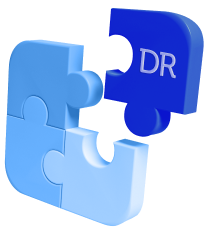Introduction
In the 20+ years that DigitalRoute has been in business, we have collaborated closely with and provided solutions for countless billing managers who oversee the billing and invoicing processes in the most complex of business environments. Since the very beginning, it has been apparent that their role is nothing short of a juggling act, with a lot of demand on them to navigate the complexities of financial operations, compliance, and technology.
A lot has happened in the last couple of decades. New business models, technologies, pricing structures, and market demands have come and gone, and billing managers are at the front line of dynamic financial functions.
Nevertheless, it’s not a role without its set of challenges. Billing Managers brave an assortment of hurdles in their daily tasks. In this blog, we’ll look at the role and responsibilities of a billing manager today and their most notable challenges.
The Role and Responsibilities of a Billing Manager
A billing manager is responsible for overseeing and managing all financial systems and processes related to payments, invoicing, and collection. They play a crucial role in the overall financial success of organizations.
Here are but a few of their responsibilities:
- Billing, invoicing, and payment management
- Pricing strategy development and implementation
- Regulatory compliance
- Revenue management
- Market adaptation
- Revenue splits and partner settlements
- System integration
- Reporting, analysis, and forecasting
- Resource allocation and cost management
- Team management
The 9 Challenges of a Modern Billing Manager
1. Pricing Models and Strategies
As companies scale up and evolve their products and/or services, the pricing models and strategies often evolve along as well.
Gone are the days of dealing with only simple one-off sales or flat-rate services. Today, with the rise of subscription offerings, we are also looking at pricing models such as freemium, tiered, usage-based or pay-as-you-go, per-user, service bundles, etc. There’s also outcome-based pricing, of course.
Companies who have started off with a flat-rate model but decided to modernize their pricing structures often adopt a hybrid approach. Yes, as the name suggests, it’s a mix or combination of different pricing models applied either on a single product/service or across an entire portfolio, but this could also involve dynamic pricing and… okay… you get the point. It’s complex, and there are many ways to price offerings these days. The set-and-forget way is no longer applicable in most cases.
Billing managers are expected to be able to develop comprehensive pricing guidelines to enforce consistency and facilitate price adjustments as needed. Keeping an eye on industry benchmarks and competitors will help them identify opportunities for improvement and innovation.
2. Billing Process Complexities
The variety of options for paying for services these days include credit cards, bank transfers, contactless payments, cryptocurrency, digital wallets, among others. Billing managers need to implement automation into the processing of, often, a combination of two or more payment methods from customers who are interfacing with their services in multiple channels.
Billing managers who work for companies that operate in foreign markets also need to be able to handle multiple currencies and adhere to local regulations. They need to consistently assess the performance of their billing tools and processes.
3. Revenue Management and Revenue Leakage
Revenue leakage is money a company loses when customers use their offerings more than they are entitled to, and identifying and preventing it is a consistent concern. This is often caused by inefficient manual processes or poor data management.
A usage data management solution that would automatically validate, cleanse, and enrich the data, and would apply any predetermined business logic before sending the transaction or event to the billing platform would be an ideal solution.
When businesses offer discounts, promotions, penetration pricing, and other strategies, billing managers need to effectively track and manage these while ensuring that they do not erode overall profitability. Aligning the said discounts with an overarching pricing strategy is quite a balancing act.
A/B testing and refining pricing tactics accordingly can help. Adopting a value-based pricing approach might also come in handy in this case.
4. Compliance
Keeping up with the changes in compliance requirements (e.g., tax codes, privacy data protection laws, and other industry-specific requirements) and making adjustments to the billing practices can be daunting. Not to mention also making sure that their billing platform and other systems they are also compliant with domestic and/or global accounting standards and undergo regular audits.
5. Scalability
When businesses evolve their pricing maturity, operations become more and more complex. The volume of transactions that need to be processed can create a bottleneck in their operations. As the complexity in offerings, pricing structures, customer preferences increase, and system integrations increase, implementing scalable solutions to accommodate the varying requirements can be daunting.
Peak billing periods, real-time usage, multi-channel and multi-metric customer engagements can cause scaling challenges. Billing platforms that were designed to handle one-time transactional data often choke when fed with such volume and complexity, which then leads to billing discrepancies.
The big task of billing managers is to find and implement a solution that can manage all that volume and complexity. A typical solution is one that structures the collected data, binds it with customers and/or business partners, enriches, self-audits, and applies the appropriate business logic before delivering it to the billing system.
6. Market Adaptation
The way customers want to consume and pay for services is constantly changing, and the fierce market competition places pressure on billing managers to not just keep up, but to sometimes also innovate their billing strategies.
Billing managers need to monitor their competitors and any behavioral trends in the market. They often leverage predictive analytics to forecast such shifts and trends and adjust pricing strategies accordingly.
7. System Adaptation and Integration
According to IBM, bad data is costing businesses $3 trillion per year… in the US alone! And bad data is often caused by legacy systems and poor integrations.
Many billing managers still rely on legacy systems that lack the flexibility and integration capabilities required today. They struggle to adapt these outdated systems to meet current market demands so they often resort to working with their IT teams in stitching up a homegrown integration solution, which often seem to work in the beginning, but as the volumes and complexity scale up, dirty data eventually starts flowing into their billing systems.
8. Cost Management
Billing managers must allocate resources efficiently to handle billing operations, which can include investing in and maintaining technology solutions, staffing, audit and compliance costs, and general operational costs.
They are also responsible for optimizing their pricing strategies and continually fine-tune them for competitiveness and profitability.
Revenue splits and partner settlements are also a growing pain for businesses that are growing and expanding their reliance on partnerships. Calculating settlements manually leads to errors and delayed payments, which hurts their trust and confidence.
9. Reporting and Analysis
Having multiple stakeholders, including executives, finance teams, and customer service within their own businesses and within business partners is a challenge. Effective data analysis and data governance is essential for billing managers to ensure the accuracy and timeliness of their reports.

Conclusion
Billing managers have a multifaceted role overseeing financial operations, tackling evolving pricing models, and grappling with challenges like revenue leakage, compliance, scalability, and market adaptation.
Embracing dynamic pricing approaches, robust automation solutions, and stringent compliance standards allows them to proactively address the challenges mentioned in this blog. It is imperative to rely on adaptable solutions, remain market-savvy, and ensure seamless systems integration for sustained efficiency. Efficient cost management and the integration of contemporary technologies for revenue sharing and settlements are indispensable to both control expenses and nurture trust among their customers and business partners. Through the refinement of reporting and analytical procedures, billing managers can consistently keep stakeholders informed in a business environment marked by perpetual transformation.








